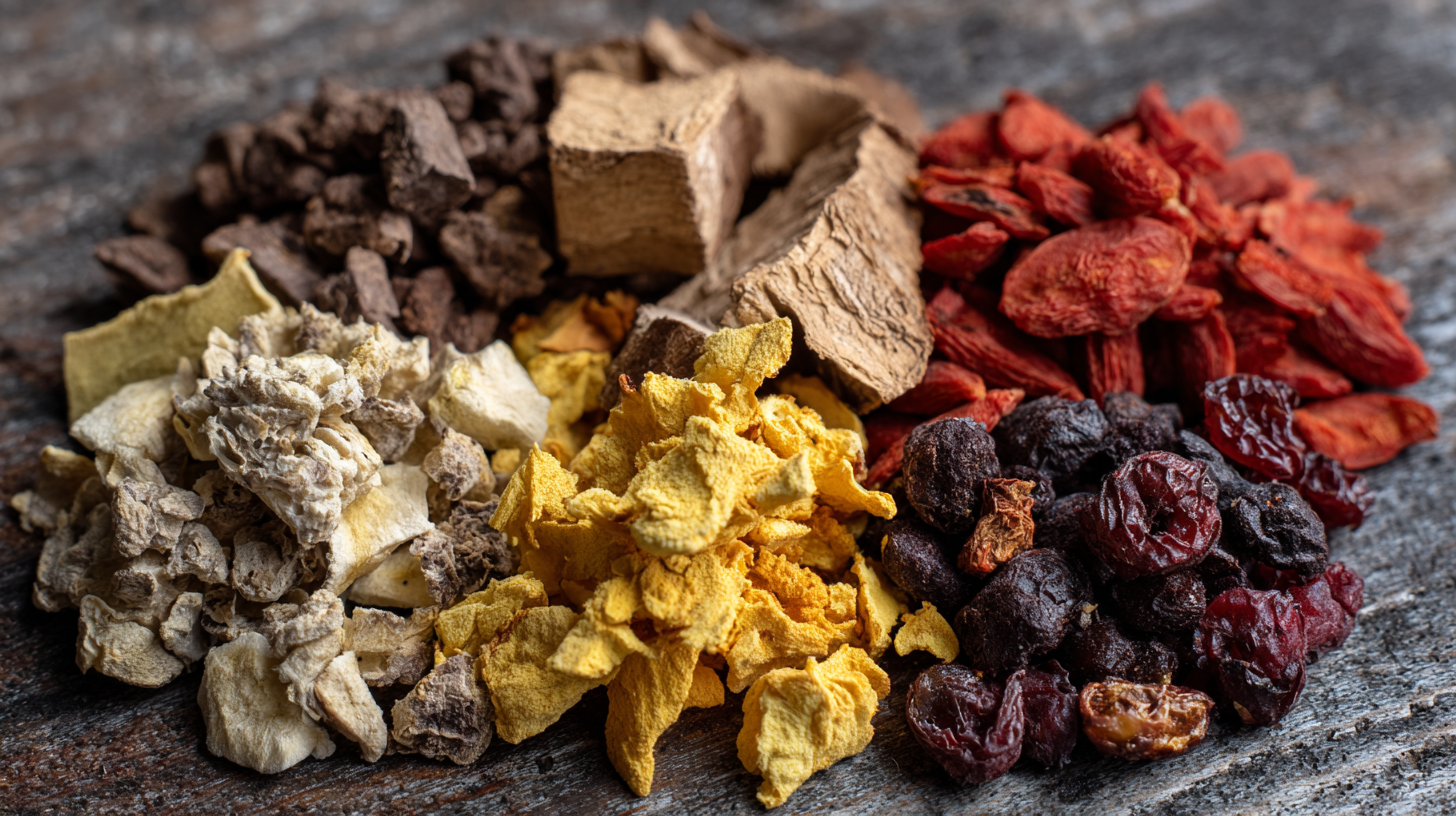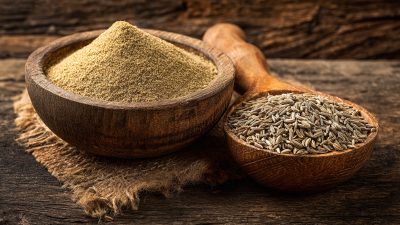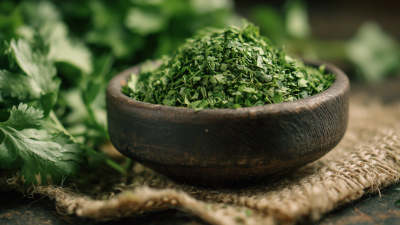In recent years, the popularity of dehydrated ingredients has surged, captivating both culinary enthusiasts and health-conscious individuals alike. As we delve into the surprising science behind these ingredients, we uncover not only their unique preservation methods but also their profound impact on nutrition. Dehydrated ingredients, from fruits to vegetables and herbs, offer an array of nutrients that can enhance our diet while providing convenience and extended shelf life.

However, many remain unaware of the essential differences between fresh and dehydrated options, leading to misconceptions about their health benefits. This article aims to explore key facts and tips about dehydrated ingredients, shedding light on how they can be effectively integrated into our daily meals to maximize nutritional value without sacrificing flavor. Join us as we unravel the science behind dehydration and its implications for a balanced diet.
Dehydration is a fascinating preservation method that has been utilized for centuries to prolong the shelf life of various ingredients while retaining their nutritional value. The fundamental science behind dehydration involves the removal of moisture, which inhibits the growth of bacteria, yeasts, and molds that can cause spoilage. By lowering the water content in food items, dehydration not only enhances their longevity but also concentrates flavors and nutrients, making them more potent in smaller servings.
The process of dehydration affects the nutritional profile of ingredients in several ways. While some vitamins, particularly those that are heat-sensitive like vitamin C, may diminish during the drying process, others like fiber and minerals remain unaffected. Furthermore, dehydration can improve the bioavailability of certain nutrients, allowing for better absorption by the body once consumed. Understanding these scientific principles equips consumers with the knowledge to make informed choices about dehydrated products in their diets, recognizing both the benefits and limitations of this preservation method.
| Ingredient | Dehydration Method | Nutritional Value (per 100g) | Shelf Life (Months) | Uses |
|---|---|---|---|---|
| Tomato | Air Drying | 223 kcal, 5.2g Protein | 12 | Soups, Sauces, Snacks |
| Mushroom | Freeze Drying | 349 kcal, 33g Protein | 24 | Stir-Fries, Risottos, Soups |
| Carrot | Dehydrator | 353 kcal, 9g Protein | 12 | Snacks, Soups, Stews |
| Apple | Sun Drying | 249 kcal, 0.5g Protein | 24 | Snacks, Cereals, Baking |
| Spinach | Oven Drying | 49 kcal, 5g Protein | 6 | Salads, Soups, Smoothies |
Dehydration has emerged as a popular preservation method, but how does it influence the nutritional value of ingredients? When fruits and vegetables are dehydrated, their water content significantly decreases, which can lead to a concentration of certain vitamins and minerals. For instance, a report from the USDA indicates that dried fruits like apricots can contain up to 7 times more Vitamin A than their fresh counterparts due to water removal. However, not all nutrients are equally resilient; the process can lead to a reduction in heat-sensitive vitamins, such as Vitamin C, which is often diminished by up to 50% during dehydration.
To maximize the nutrient density of dehydrated ingredients, consider these tips:
Rehydration techniques play a crucial role in maximizing the nutritional value of dehydrated foods. Dehydration is a preservation method that often retains most nutrients, but how you rehydrate these ingredients can significantly impact their nutritional quality. According to a study published in the Journal of Food Science, rehydration techniques can affect the bioavailability of certain vitamins and minerals.
For instance, soaking dehydrated fruits and vegetables in warm water for a short duration can enhance their nutrient uptake compared to prolonged soaking in cold water, which might lead to nutrient loss through leaching.
Moreover, using methods such as steam rehydration instead of boiling can preserve more nutrients. A report by the Food and Agriculture Organization (FAO) indicated that steam treatments could retain up to 70% of vitamins that often degrade under high temperatures. Additionally, incorporating rehydrated ingredients into dishes like soups or smoothies can enhance the overall nutrient density, as the hydration process helps release beneficial compounds that were locked during the dehydration phase.
By understanding and applying effective rehydration techniques, consumers can significantly elevate the health benefits of dehydrated foods, making them a smart choice for a balanced diet.
Incorporating dehydrated ingredients into your diet opens up a world of culinary possibilities while enhancing nutritional value. Dehydrated fruits and vegetables retain a significant amount of their vitamins and minerals, making them a convenient option for maintaining a balanced diet. For example, dried spinach can be easily added to smoothies or soups, boosting iron and fiber content without taking up much space in your pantry. Similarly, dehydrated fruits like apples or apricots make for excellent snack options, providing natural sweetness along with essential antioxidants.

Beyond snacks, dehydrated ingredients offer versatility in diverse recipes. They can be rehydrated and included in grain bowls, salads, or stews, allowing home cooks to experiment with different textures and flavors. Moreover, dehydrated herbs and spices can elevate dishes significantly, adding depth without the need for artificial preservatives. Ultimately, integrating dehydrated ingredients into everyday meals not only enhances the nutritional profile but also simplifies meal prep, making healthy eating more accessible and enjoyable.
When comparing fresh and dehydrated ingredients, it's essential to examine the nutritional differences that can impact health benefits. Fresh fruits and vegetables are typically heralded for their high water content and abundant vitamins, which can diminish during the dehydration process. However, dehydrated ingredients often retain a concentrated amount of nutrients, making them a valuable option, especially when fresh produce is unavailable. For instance, dehydrated tomatoes are rich in antioxidants like lycopene, which remain effective after the drying process, demonstrating that certain nutrients can be more accessible in a dehydrated form.
Moreover, the shelf-life of dehydrated ingredients provides practical advantages that fresh produce cannot match. While fresh ingredients can spoil quickly and require proper storage, dehydrated foods can be stored for extended periods without losing significant nutritional value. This preservation method allows for year-round access to seasonal fruits and vegetables, ensuring that individuals can maintain a diverse diet. As such, incorporating both fresh and dehydrated ingredients can allow for a balanced approach to nutrition, leveraging the strengths of each to maximize health benefits.







